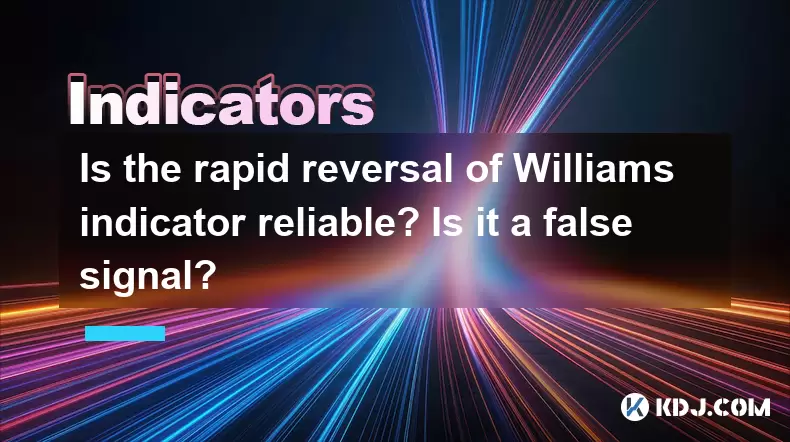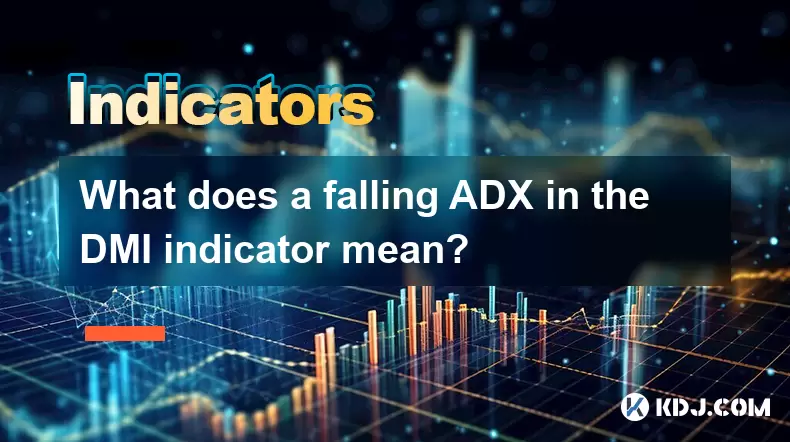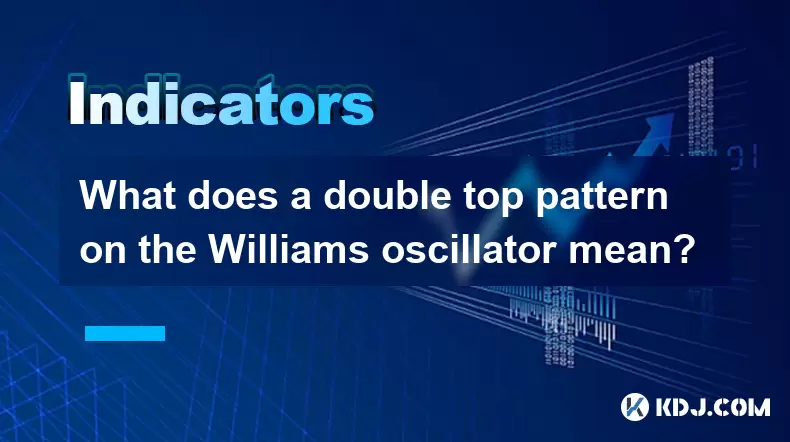-
 Bitcoin
Bitcoin $116700
0.24% -
 Ethereum
Ethereum $3973
4.34% -
 XRP
XRP $3.283
7.68% -
 Tether USDt
Tether USDt $1.000
0.01% -
 BNB
BNB $789.8
2.27% -
 Solana
Solana $176.2
3.31% -
 USDC
USDC $0.9999
0.00% -
 Dogecoin
Dogecoin $0.2238
5.14% -
 TRON
TRON $0.3389
-0.51% -
 Cardano
Cardano $0.7907
4.03% -
 Stellar
Stellar $0.4527
10.02% -
 Hyperliquid
Hyperliquid $41.07
4.27% -
 Sui
Sui $3.794
1.77% -
 Chainlink
Chainlink $19.49
10.40% -
 Bitcoin Cash
Bitcoin Cash $580.9
0.74% -
 Hedera
Hedera $0.2617
4.32% -
 Avalanche
Avalanche $23.41
3.67% -
 Ethena USDe
Ethena USDe $1.001
-0.03% -
 Litecoin
Litecoin $122.4
1.38% -
 Toncoin
Toncoin $3.364
1.49% -
 UNUS SED LEO
UNUS SED LEO $8.988
0.37% -
 Shiba Inu
Shiba Inu $0.00001295
2.82% -
 Uniswap
Uniswap $10.62
5.75% -
 Polkadot
Polkadot $3.922
4.46% -
 Dai
Dai $1.000
0.01% -
 Bitget Token
Bitget Token $4.494
2.15% -
 Monero
Monero $268.0
-1.30% -
 Cronos
Cronos $0.1523
3.68% -
 Pepe
Pepe $0.00001127
4.43% -
 Aave
Aave $285.4
4.85%
Is the rapid reversal of Williams indicator reliable? Is it a false signal?
The Williams %R indicator, used to spot rapid reversals in crypto markets, can signal potential price changes but may also lead to false positives, requiring careful analysis.
Jun 01, 2025 at 01:21 pm

The Williams %R indicator, developed by Larry Williams, is a momentum indicator that measures overbought and oversold levels. It is used to identify potential reversals in the price of an asset, particularly in the cryptocurrency market. The rapid reversal of the Williams %R indicator often sparks debate among traders regarding its reliability and whether it signals a false positive. In this article, we will delve into the mechanics of the Williams %R indicator, analyze the nature of rapid reversals, and discuss the reliability and potential pitfalls of these signals.
Understanding the Williams %R Indicator
The Williams %R indicator is calculated using the highest high and the lowest low of a specified period, typically 14 days. The formula for the Williams %R is as follows:
[ \text{Williams \%R} = \frac{\text{Highest High} - \text{Close}}{\text{Highest High} - \text{Lowest Low}} \times -100 ]
The Williams %R ranges from 0 to -100. A reading above -20 indicates an overbought condition, suggesting that a reversal to the downside may be imminent. Conversely, a reading below -80 indicates an oversold condition, suggesting a potential reversal to the upside.
Rapid Reversals of the Williams %R Indicator
A rapid reversal of the Williams %R indicator occurs when the indicator quickly moves from an extreme level (either overbought or oversold) back towards the middle range. This can happen within a few candlesticks and is often interpreted as a signal that the current trend may be losing momentum.
For example, if the Williams %R moves from -5 to -50 in a short period, it suggests that the asset was extremely overbought and is now moving towards a more neutral level. Similarly, a rapid move from -95 to -50 indicates a shift from an oversold to a more balanced state.
Analyzing the Reliability of Rapid Reversals
The reliability of rapid reversals in the Williams %R indicator can vary depending on several factors, including the timeframe used, the asset's volatility, and the market context. Here are some key points to consider:
Timeframe: Rapid reversals are more common and potentially more reliable on shorter timeframes, such as 1-hour or 4-hour charts. On longer timeframes like daily or weekly charts, rapid reversals may be less frequent and less reliable.
Volatility: Highly volatile assets, such as many cryptocurrencies, can experience more frequent and rapid reversals. However, these reversals may also be more prone to false signals due to the increased noise in the price action.
Market Context: The broader market context can significantly impact the reliability of rapid reversals. For instance, during strong bullish or bearish trends, rapid reversals may be less reliable as the overall trend can overpower short-term signals.
Identifying False Signals
False signals occur when the Williams %R indicator suggests a reversal that does not materialize. Several methods can help traders distinguish between genuine and false signals:
Confirmation with Other Indicators: Using other technical indicators, such as the Relative Strength Index (RSI) or Moving Average Convergence Divergence (MACD), can help confirm or refute the signals provided by the Williams %R. If multiple indicators align, the signal is more likely to be genuine.
Price Action Analysis: Observing the price action around the time of the rapid reversal can provide additional context. For instance, if the rapid reversal is accompanied by a significant candlestick pattern (e.g., a doji or a hammer), it may increase the likelihood of a genuine reversal.
Volume Analysis: High trading volume during a rapid reversal can indicate strong market interest and increase the probability of a valid signal. Conversely, low volume may suggest a lack of conviction and a higher chance of a false signal.
Practical Application: Trading with Rapid Reversals
To effectively trade using rapid reversals of the Williams %R indicator, follow these steps:
Set Up the Indicator: Add the Williams %R indicator to your trading chart with a period of 14. Ensure it is set to display overbought and oversold levels at -20 and -80, respectively.
Monitor for Rapid Reversals: Keep an eye on the indicator for rapid movements from extreme levels back towards the middle range. For instance, a move from -5 to -50 or from -95 to -50 within a few candlesticks.
Confirm the Signal: Use other technical indicators and price action analysis to confirm the rapid reversal. Look for alignment with the RSI, MACD, and significant candlestick patterns.
Check Volume: Verify that the rapid reversal is accompanied by sufficient trading volume to validate the signal.
Enter the Trade: If all conditions are met, enter a trade in the direction suggested by the rapid reversal. For example, if the Williams %R rapidly moves from -5 to -50, consider a short position. If it moves from -95 to -50, consider a long position.
Set Stop-Loss and Take-Profit Levels: Always set stop-loss and take-profit levels to manage risk. For a short position, place the stop-loss above the recent high and the take-profit at a logical support level. For a long position, place the stop-loss below the recent low and the take-profit at a logical resistance level.
Case Study: Rapid Reversal on Bitcoin
To illustrate the concept, let's consider a hypothetical case study involving Bitcoin (BTC). Suppose the Williams %R indicator for Bitcoin on a 1-hour chart rapidly moves from -95 to -50. This move suggests that Bitcoin was extremely oversold and is now moving towards a more neutral level, potentially indicating an upcoming bullish reversal.
Confirmation: The RSI, which was also in oversold territory, starts to move upwards, confirming the signal from the Williams %R. Additionally, a bullish engulfing candlestick pattern appears on the chart.
Volume: The rapid reversal is accompanied by a significant increase in trading volume, further validating the signal.
Trade Execution: Based on these factors, a trader might decide to enter a long position on Bitcoin. They would set a stop-loss below the recent low and a take-profit at a logical resistance level.
Outcome: If the price of Bitcoin subsequently rises, the trader would profit from the trade. If the price falls, the stop-loss would limit the potential loss.
Frequently Asked Questions
Q: Can the Williams %R indicator be used effectively on all cryptocurrencies?
A: The Williams %R indicator can be used on all cryptocurrencies, but its effectiveness may vary depending on the asset's volatility and trading volume. More volatile cryptocurrencies may produce more frequent signals, but these signals may also be less reliable due to increased noise in the price action.
Q: How does the Williams %R indicator perform during high-impact news events?
A: During high-impact news events, the Williams %R indicator, like many technical indicators, may produce false signals due to increased market volatility and rapid price movements. It is advisable to use additional confirmation tools and exercise caution when trading during such events.
Q: Is it possible to use the Williams %R indicator on different timeframes simultaneously?
A: Yes, traders can use the Williams %R indicator on multiple timeframes to gain a more comprehensive view of the market. For instance, using it on both a 1-hour and a daily chart can help identify both short-term and long-term trends and reversals.
Q: How does the Williams %R indicator compare to other momentum indicators like the RSI?
A: The Williams %R and RSI are both momentum indicators, but they have some key differences. The Williams %R focuses on the closing price relative to the high-low range, while the RSI compares the magnitude of recent gains to recent losses. The Williams %R is more sensitive to rapid price changes, making it potentially more suitable for identifying rapid reversals, whereas the RSI may provide more stable signals over time.
Disclaimer:info@kdj.com
The information provided is not trading advice. kdj.com does not assume any responsibility for any investments made based on the information provided in this article. Cryptocurrencies are highly volatile and it is highly recommended that you invest with caution after thorough research!
If you believe that the content used on this website infringes your copyright, please contact us immediately (info@kdj.com) and we will delete it promptly.
- Roman Storm, Funding Effort, and the Looming Defense Retrial: A New York Minute on the Tornado Cash Case
- 2025-08-09 02:50:14
- Crypto's Wild Ride: XRP, Dogecoin, and the Altcoin Surge You Can't Ignore
- 2025-08-09 02:50:14
- Elon Musk, Bitcoin, and the Enduring Power of Approval: A Crypto Love Story?
- 2025-08-09 03:50:15
- Ruvi AI: The Next Big Thing After Ripple on CoinMarketCap?
- 2025-08-09 03:50:15
- Floki Price Surges: Elliott Wave and Fibonacci Setups Point to Potential Gains!
- 2025-08-09 02:30:16
- Pepe Price, RTX (Remittix?) & the $10K ETH Dream: NYC Crypto Chatter
- 2025-08-09 02:30:16
Related knowledge

What does it mean when the TRIX indicator suddenly diverges downward after a long period of convergence?
Aug 09,2025 at 12:56am
Understanding the TRIX Indicator in Cryptocurrency TradingThe TRIX indicator, or Triple Exponential Average, is a momentum oscillator used in technica...

Why is the rise limited after a MACD bottoming divergence?
Aug 09,2025 at 12:07am
Understanding MACD Bottoming Divergence in Cryptocurrency TradingThe MACD (Moving Average Convergence Divergence) is a widely used technical indicator...

What does it mean when the OBV continues to rise but the price is trading sideways?
Aug 08,2025 at 10:35pm
Understanding On-Balance Volume (OBV)On-Balance Volume (OBV) is a technical indicator that uses volume flow to predict changes in stock or cryptocurre...

What does a falling ADX in the DMI indicator mean?
Aug 09,2025 at 03:16am
Understanding the ADX and DMI Indicator FrameworkThe DMI (Directional Movement Index) is a technical analysis tool developed by J. Welles Wilder to id...

What does a double top pattern on the Williams oscillator mean?
Aug 09,2025 at 02:36am
Understanding the Williams %R OscillatorThe Williams %R oscillator is a momentum indicator developed by Larry Williams to identify overbought and over...

What is a nonce and how is it used in Proof of Work?
Aug 04,2025 at 11:50pm
Understanding the Concept of a Nonce in CryptographyA nonce is a number used only once in cryptographic communication. The term 'nonce' is derived fro...

What does it mean when the TRIX indicator suddenly diverges downward after a long period of convergence?
Aug 09,2025 at 12:56am
Understanding the TRIX Indicator in Cryptocurrency TradingThe TRIX indicator, or Triple Exponential Average, is a momentum oscillator used in technica...

Why is the rise limited after a MACD bottoming divergence?
Aug 09,2025 at 12:07am
Understanding MACD Bottoming Divergence in Cryptocurrency TradingThe MACD (Moving Average Convergence Divergence) is a widely used technical indicator...

What does it mean when the OBV continues to rise but the price is trading sideways?
Aug 08,2025 at 10:35pm
Understanding On-Balance Volume (OBV)On-Balance Volume (OBV) is a technical indicator that uses volume flow to predict changes in stock or cryptocurre...

What does a falling ADX in the DMI indicator mean?
Aug 09,2025 at 03:16am
Understanding the ADX and DMI Indicator FrameworkThe DMI (Directional Movement Index) is a technical analysis tool developed by J. Welles Wilder to id...

What does a double top pattern on the Williams oscillator mean?
Aug 09,2025 at 02:36am
Understanding the Williams %R OscillatorThe Williams %R oscillator is a momentum indicator developed by Larry Williams to identify overbought and over...

What is a nonce and how is it used in Proof of Work?
Aug 04,2025 at 11:50pm
Understanding the Concept of a Nonce in CryptographyA nonce is a number used only once in cryptographic communication. The term 'nonce' is derived fro...
See all articles

























































































